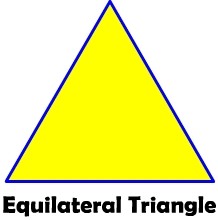I can use my knowledge of rounding to routinely estimate the answer to a problem then, after calculating, decide if my answer is reasonable, sharing my solution with others. NMU 2-01a
Having determined which calculations are needed, I can solve problems involving whole numbers using a range of methods, sharing my approaches and solutions with others. NMU 2-03a
Having explored the patterns and relationships in multiplication and division, I can investigate and identify the multiples and factors of numbers. MTH 2-05a
Over the next few weeks we are going to be learning to:
New learning 6,7, and 8 x tables
• Understand the inverse relationships of addition/subtraction and multiplication/division
• Know and understand the effect of multiplying and dividing by 0, 10, 100, 1000
• Appreciate that there are several ways to solve the same problem and that the nature of the problem may determine the strategy chosen
• Use existing knowledge of multiplication tables to derive new facts, e.g. 7 x 6 = (5 x 6) + (2 x 6); 9 x 4 = (10 x 4) – 4
• Recall multiplication and related division facts quickly and accurately
• Select and apply the appropriate operation or process in calculations, justifying their choice
• Use a range of mental and written strategies for addition, subtraction, multiplication and division
• Use their understanding of inverse relationships to find related facts to simplify calculations, e.g. to find 40 ÷ 5 think, “How many 5s make 40?
• Use commutative, associative and distributive properties to simplify mental calculations, e.g. 4 x 36 = (4 x 30) + (4 x 6)
• Calculate exact answers using a range of mental or written methods
• Compare actual answers to estimates and judge whether the answer is reasonable
• Set their own criteria for sorting sets of numbers, explaining and justifying their choices
• Know the meaning of the terms multiple and factor
Here are some ideas of how you can help me at home!
- The answer is 2400 – Ask your child to write as many multiplication questions as he/she can involving multiples of 10 and 100 with the answer 2400, e.g. 3 × 800, 40 × 60, 12 × 200, 80 × 30, 120 × 20, 400 × 6, etc. Encourage your child to include more than two numbers in the multiplication questions, e.g. 3 × 40 × 20 or 2 × 20 × 60 or 2 × 2 × 2 × 300, etc. Other target numbers could be given,
e.g. 360, 4800 or 6400, etc.
- Funny puzzles – Spend some time writing some funny puzzles. For example, what is the number of doors in your house, multiplied by your favourite number and then divided by your age? Ask your child to make up and calculate answers to four different puzzles. Puzzles could then be brought into class to share with friends.
- Teach them how – Ask your child to make an information leaflet for a friend, teaching them about the link between multiplication and division facts.
Here are some websites that you may find useful to use with me!
Website 1 – http://www.multiplication.com/games/all-games A wonderful selection of multiplication games with varying degrees of challenge.
Website 2 – http://www.fun4thebrain.com/multiplication/deepdivemult.html A great game for brushing up on those basic tables facts.
Website 3 – http://www.fun4thebrain.com/Division/dinoDigDiv.html Practise division facts with this archaeology themed game.
Please feel free to let me know if this information has been useful.









































































